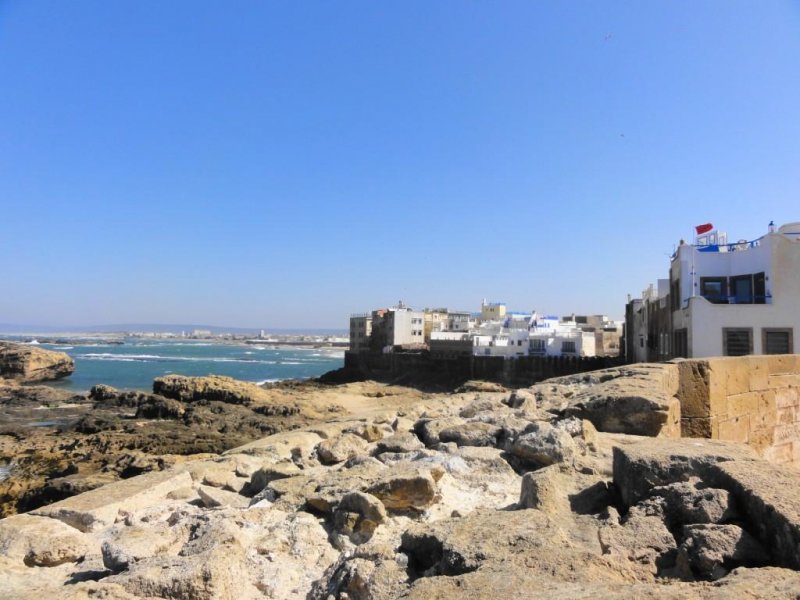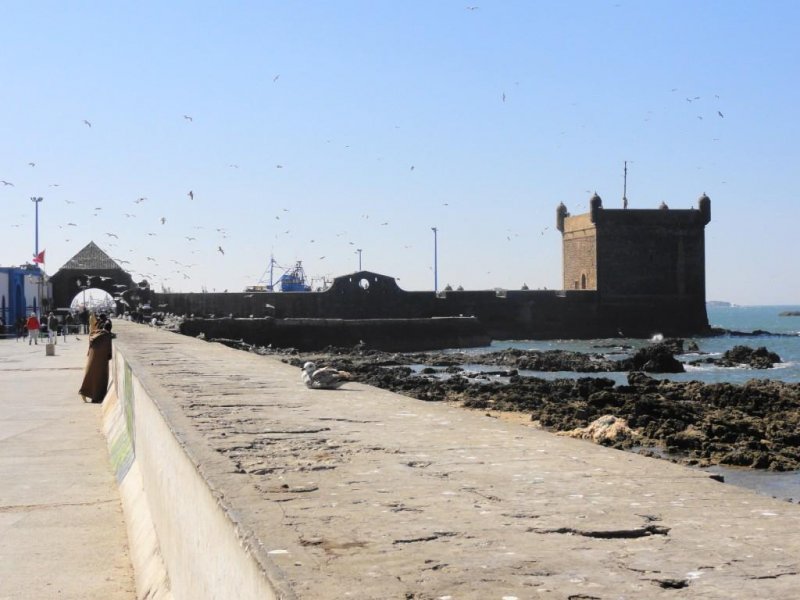Essaouira
Since 2001, the Medina of Essaouira is a World Heritage Site by UNESCO, which recognizes the building as "an outstanding example of fortified town of the late eighteenth century, built in North Africa according to the principles of military architecture European era "
The city of Essaouira, or Mogador (name from the Phoenician word Migdol, meaning "fortress"), is located on the Atlantic coast of Morocco south of Casablanca (350 km) and west of Marrakech (180km). Essaouira has about 70.000 inhabitants in a province of about 500,000 inhabitants. Essaouira is twinned with French towns of St. Malo and La Rochelle and the town of Etterbeek, Belgium.
History
Essaouira, which means "well-designed", aptly named as the drawing of the fortress is worked. Archaeological excavations show the presence of the Phoenicians on the island of Mogador around the 7th century BC. The region was then successively visited by the Cretans, Greeks and Romans. In the 16th century the Portuguese are very interested in the city and built a small fortress which would have served to present the medina.
The city as it exists today dates from 1765 and was erected at the request of Sultan Mohamed Ben Abdallah Alawi. The initial objective was the Sultan of Morocco on the open Atlantic to develop trade. The walled medina is the work of Theodore Cornut, a French specialist in military fortifications (heavily influenced by Vauban). He used French prisoners to build the fortress, taken at the defeat of Larache (Northern Morocco). He took his inspiration from the fortress of Saint-Malo to build the walls and decided to organize the city as a checkerboard. Theodore Cornut, who had been employed by Louis XV to the fortifications of Roussillon, worked three years to build the port and the Kasbah, the original plan is still in the Bibliotheque Nationale de France in Paris.

During the reign of the Sultan, Mogador (Essaouira) is increasingly important and becomes the reference port of Morocco forcing some European consulates Safi, Agadir and Rabat to move to Essaouira. At that time, Essaouira is nicknamed "the port of Timbuktu", where come caravans from all over Africa who trade goods and slaves. Essaouira is then divided into three distinct neighborhoods. Kasbah includes the old administrative district. Medina is built between the 18th century and early 20th century. It is crossed by two main lines, one connecting Bab Doukkala port and the other starting from Bab Marrakech to reach the sea At the junction of these two districts, four markets are installed respectively devoted to fish, spices, cereals and groceries. The Mellah Jewish quarter, played an important role in the history of the city because the Sultan used the Jewish community to build relationships with Europe and organize business activities. Jews were honored as Toujjar Es-Sultan (Merchant Royal), which conferred them considerable economic and political privileges. Essaouira today lives mainly on tourism.
